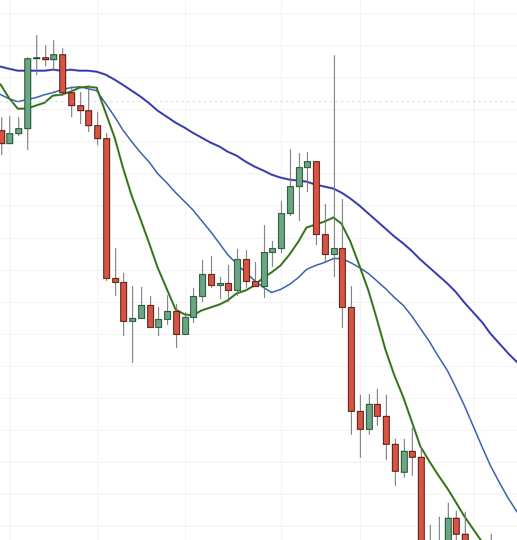3 min read
A Year with "The Trading Mindwheel": Transforming Trading Through Psychology
The following is a guest post from Michael Lamothe.
I'm Michael Lamothe, and today marks an extraordinary milestone: the first anniversary of "The...
3 min read
Rolf
Apr 24, 2017 8:00:00 PM

So what is the “best moving average” for your trading? Believe it or not, we get asked this question multiple times each day so let me share my view on it. And by the way, the answer you’ll get from me also applies to any indicator setting because the underlying principles are the same.
Whether it’s your moving average, the STOCHASTIC or the MACD indicator, you have three choices for your indicator setting: a fast (low period), a medium (mid period) or a slow (high period) setting.
When it comes to moving averages, here are a few common examples:
Most traders just ask for the ‘best’ moving average but do not really understand what they want to achieve with their tools. We have talked about moving averages and how to use them before, but generally traders use moving averages to: determine trend direction, time trade entries, use them for stops and targets, or exiting their trades.
I consider myself a medium-term swing trader which means I hold trades for anything between 12 hours and multiple days. Thus, I use a moving average in my trading that helps me with my medium-term trading decisions. A fast moving average would generate too many signals and provide too much noise, while a long-term moving average would give signals that are too late.
| Fast | Medium | Slow |
| + Signals come fast | Compromise between Fast and Slow | – Few signals |
| + Get in and out of trades fast | – React to sudden changes late | |
| + React to sudden changes fast | Fewer signals than the fast setting but also less prone to noise signals | + Can hold trades and ride trends long |
| – Many false signals | + Filter out noise | |
| – Hard to hold trades long | Get out of trades sooner than the Slow setting and you can react to changes quicker | + Can be good support and resistance tools |
I don’t like to move too close to one extreme which is why I settled right in the middle by choosing a 20 period SMA. This is probably the most standard moving average but it does work very well for my purposes: entry timing, trade filtering etc. I don’t need super-fast signals and I am not interested in holding trades for an extremely long period.
Although moving averages and indicators are great tools (if you say otherwise, you probably don’t know how to use them the right way), it’s easy to completely mess up your strategy by using moving averages the wrong way.
Here are the most common problems I see every day when it comes to using indicators:
I will say it again: you cannot create a perfect system and you should not try it. Much more important is it to learn to live with the imperfections and faults of your system which means understanding when it doesn’t work, when and how to take a loss and when not to trade.
Once you have made your decisions, don’t change it regardless of how much money you lose or how bad you think the moving average is.
It is very important that you get a large enough sample size (you take many trades with the same moving average or indicator) and then you look at all trades in your trading journal and ask yourself:
Most traders just think: losing trade à my moving average is not good, I need another one. Winning trade à good moving average.
A moving average is no magic tool and it DOES NOT MATTER whether you have a 15 period, a 16 period, a 20 period, an EMA or SMA. The only important thing is that you make consistent decisions, find out when the market conditions favor your tools (so you can take more of such trades), and when your tools don’t work (so you can stay away from trading).
If you made it through this article, congratulations. Most traders have already given up reading this article because they just want me to throw a random number at them that they can use for their moving average. Once you understand that trading successfully has not much to do with the exact tools you use but how you use them, you are a big step closer to profitable trading.
In this context, I like to talk about the hit-and-miss vs. the evidence-based development. The trader who always looks for the “next best thing” will move in circles without getting anywhere. The other trader understands that he must push through hard times to slowly improve and work on his system. It’s the same with any skill; you don’t just suddenly become an expert, but you slowly work your way up.

3 min read
The following is a guest post from Michael Lamothe.
I'm Michael Lamothe, and today marks an extraordinary milestone: the first anniversary of "The...

3 min read
It's easy to get discouraged by losses and question your every move. But what if there was a way to track your progress, learn from mistakes, and...

8 min read
Dive deep into the world of finance and high-stakes trading with this selection of movies and documentaries! From the exhilarating thrill of...